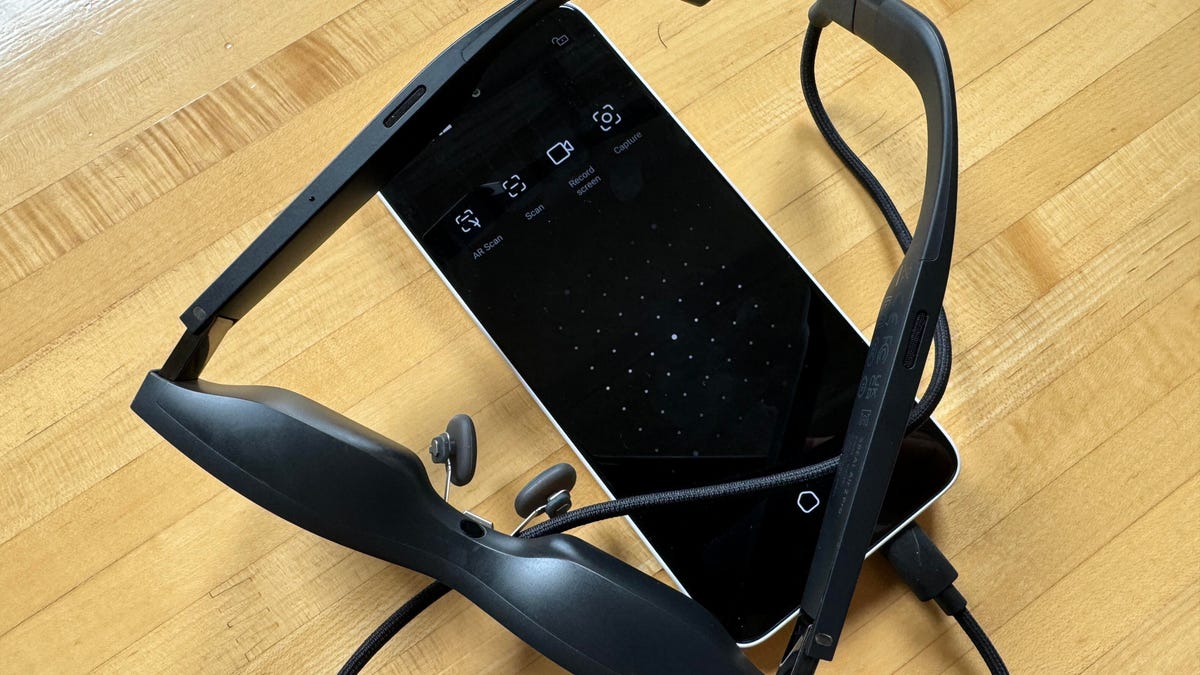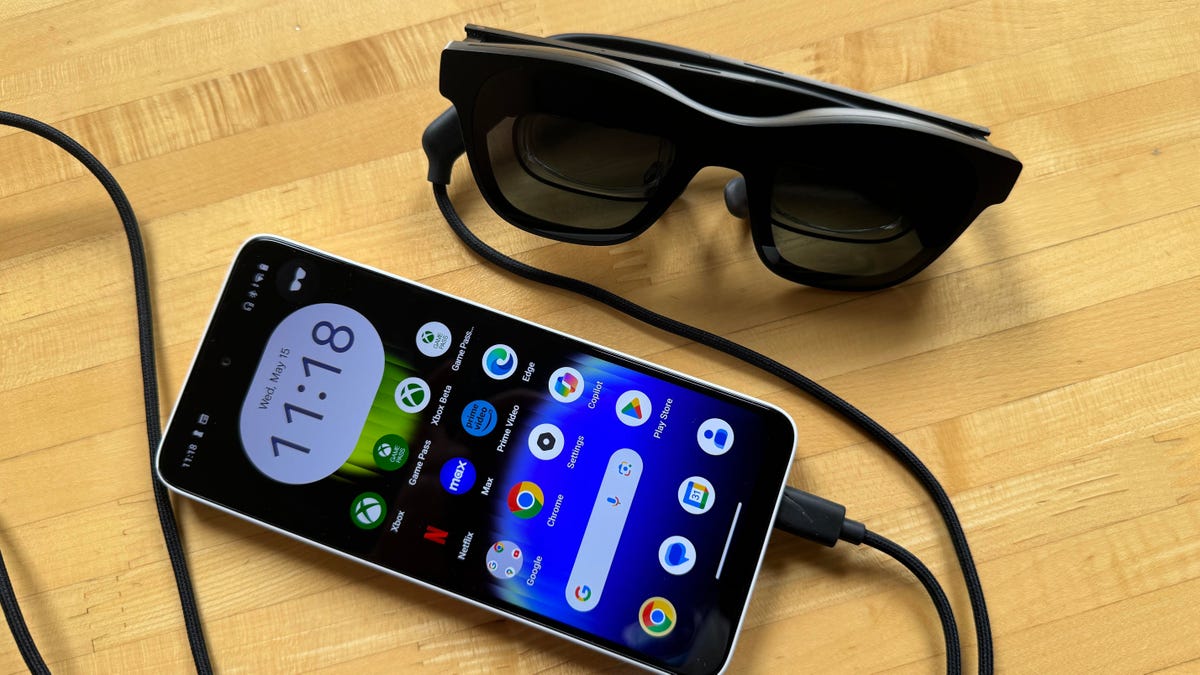I saw the device in front of me, Xreal’s new Beam Pro, and thought: It’s an Android phone. Large-screened, cameras on the back. But Xreal’s $199 Beam Pro isn’t a phone. It’s a handheld controller and AR enabler for Xreal’s own line of plug-in display-enabled glasses. The Xreal Beam Pro is available to order now, with the hardware shipping sometime in August. Based on my limited time with it, it looked promising for anyone who already owns a pair of Xreal’s already-great glasses, especially for the price. But what I really thought was: come on, Google and Apple, make phones that work well with AR glasses already.
Xreal has been a key company pushing into a not-quite-here space of AR glasses, something more compact and everyday than the bigger, less portable mixed reality headsets out there now, including the Meta Quest 3 and Apple’s Vision Pro. I wore Xreal’s Air 2 Pro glasses on my flight out to Long Beach to attend this year’s Augmented World Expo, an AR conference where Xreal introduced the news of the Beam Pro’s launch. I got to see the Beam Pro in my own hands a few weeks ago in New York, too.
The Beam Pro runs on Android 14, and has its own Qualcomm SD6450 processor. Xreal runs its own Nebula OS on top of Android, allowing all the Android apps it has on it to show up in the glasses in an AR-like layout, with the glasses able to track head position. It works with Xreal’s Air, Air 2 and Air 2 Pro glasses, but also adds full six-degrees-of-freedom room motion if you’re wearing the Xreal Air 2 Ultra glasses, which are the only model to have their own necessary in-glasses room tracking sensors.
The Beam Pro, at casual first glance, looks just like a phone. It very nearly is.
While Xreal emphasizes the Beam Pro isn’t a true phone, you can buy a 5G-enabled model too (the base one is Wi-Fi only). The screen of the Beam Pro — a 2,400×1,080-pixel, 6.5-inch LCD — can also double as a controlling trackpad when in AR with the glasses plugged in. Using apps on the floating glasses displays and using the Beam Pro as a trackpad, I was reminded of Samsung’s DeX on its Android phones, which can extend apps onto connected monitors. But in this case, the monitors are AR glasses. Apps are stored on the Beam Pro, which has either 128 or 256GB of storage and a microSD card slot, too.

The Beam Pro’s display when it’s in trackpad and glasses-control mode. Note the icons.
The Beam Pro has other clever ideas that most phones don’t have at all. Two widely spaced cameras on the back can shoot 50-megapixel spatial photos and video that can be viewed on Xreal glasses, though I didn’t get to see how those looked. There are also dual USB-C ports on the phone, so glasses can be plugged in while simultaneously staying plugged in to charge.
Xreal made a previous processor-enabled accessory for its glasses, a screen-free device called the Xreal Beam that looked like an iPod. The Beam Pro looks a lot more useful: It can easily load and run Android apps, its touchscreen can control your Xreal glasses and the spatial photos perk sounds fun.

When will other phones work seamlessly with AR glasses?
In mid-2024, though, the Xreal Beam Pro looks like a precursor. Most phones don’t seamlessly work with AR glasses right now, but at some point they will. Phones can be battery packs, processors and controllers, while the glasses are kept small. This has been what Qualcomm has discussed at length for years, but we’re starting to see more signs of that future arriving.
For the rest of it to get here, we’ll need Google (and someday Apple) to play a greater role with the phones we already have. In the meantime, the Xreal Beam Pro might be the closest I’ve seen in a nearly phone-like phone device.
Read the full article here